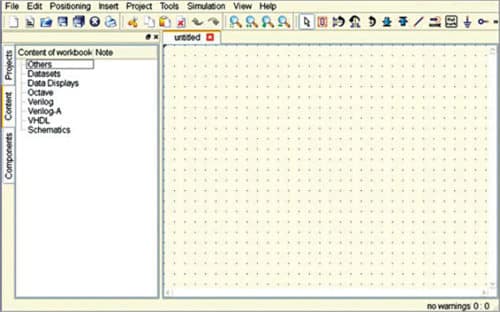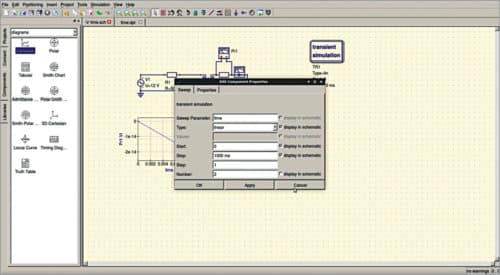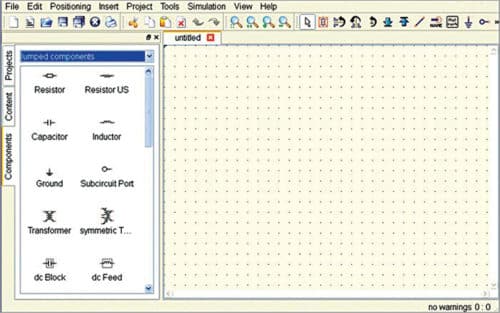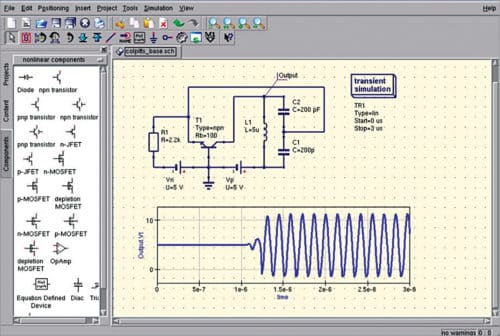Quite Universal Circuit Simulator (QUCS) software makes electronic circuit simulation easy. That means you can digitally design your circuit and evaluate its functionality before creating the real circuit. It is a free software licensed under the GNU General Public License (GPL) that saw a stable release recently with many upgrades and improvements. It is easy to use and provides clear visibility of everything in your circuit.
What Quite Universal Circuit Simulator offers
QUCS brings an interactive graphical user interface (GUI) that helps to perform all the changes in a project on the workspace. Users can set up schematics for simulations, perform modifications or write codes on the interface as required. The software interface is quite familiar: The centre is occupied by workspace, where the designed circuit can be visualised using a netlist. Essential menus and tools on the top allow quick access to different functionalities. Main menus include File, Edit, Insert, Project, Simulation, View and Help. Below the menus are some quick access options for different circuit components, and view or file options. On the left of the workspace, a panel consists of information like available schematics, datasets and data displays. Each category can be expanded to access available elements.
QUCS involves a lot of command-line programming for setting directions of the operations to be performed, mainly for the analogue simulator. The tool feeds on pre-built netlists, checks errors and proceeds for simulation. Data generated from the simulation is stored as a dataset.
QUCS can run small-signal as well as large-signal circuits. It also supports SPICE sub-circuits. Even languages like VHDL or Verilog are supported for pure digital circuit simulation.

Components library manager in QUCS preserves all the digital replica of real-life electronic components like diodes, transistors, op-amps and bridges among others. The library is quite large and can be further expanded by the user. The text editor displays and records different logging information and edit component files. There are in-built tools in the software that can generate different electronic components. For instance, a filter synthesis application can be used to generate various circuit filters, transmission line calculator can design and analyse newly created transmission lines, attenuator synthesis application can create passive attenuators, and so on.
QUCS can import and export elements like netlists, datasets and data tools from other EDA or CAD software. This is done by the command line conversion program tool. It can generate digital simulations using VHDL from external tools like FreeHDL. It can also connect to a software called ASCO for circuit optimisation.

Getting started with Quite Universal Circuit Simulator
Installation of QUCS is simple and well-instructed. Once it is installed, launch it to start a new project. Provide the project name and confirm to be directed to the workspace. There, you can add your components and wires through pick-n-place applications. Select the desired components from Components folder in the panel. Right-clicking the circuit elements enables you to perform further operations like editing the component specifications or inserting relevant text labels.
Once you have created the circuit, go to Simulation in the menus and click Simulate. A new window will open, which allows you to choose the type of visual graph for simulation data. Select the graph of your choice and simulate the circuit to see the different data points and circuit behaviour.

The Quite Universal Circuit Simulator library
The latest release of QUCS library is quite versatile and contains all components needed to build different kinds of circuits. It contains sources, probes, transmission lines, digital components, lumped components like R, L, C amplifiers, phase shifters, non-linear components like diodes and transistors, file containers like SPICE netlists, paintings and so on. Users can include various transistor models like JFET, MOSFET, SGP, various HICUM models, MESFET among others.
Dataset items include AC/DC voltage and current, noise voltage, noise current, transient voltage, transient current and S-parameter value. Types of charts include Smith, Cartesian, Tabular, Polar, Smith-Polar combination, 3D-Cartesian, Locus Curve, Timing Diagram and Truth Table.

QUCS offers a range of expansion and customisation options. External tool plugin option is quite useful. Operations like harmonics analysis, circuit optimisation, transient analysis and sub-circuit simulation can be readily performed using QUCS. The software has a powerful data post-processing capacity and support for multiple languages. All this makes QUCS a very useful circuit simulation tool.
Download the latest version of the software










